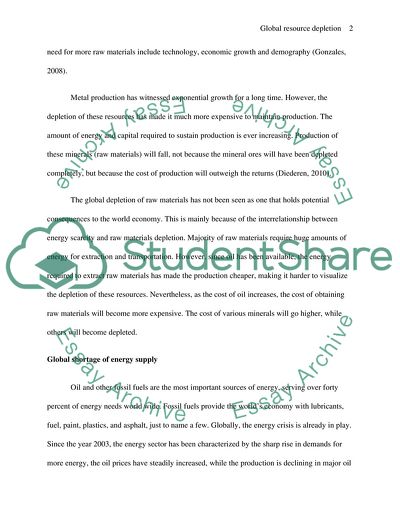Cite this document
(Global Resource Depletion: A Developing Focus in the Policy Arena Term Paper, n.d.)
Global Resource Depletion: A Developing Focus in the Policy Arena Term Paper. https://studentshare.org/environmental-studies/1777845-discuss-the-proposition-that-global-shortages-of-essential-raw-materials-and-energy-supplies-will-displace-environmental-risk-as-a-driver-of-government-policy
Global Resource Depletion: A Developing Focus in the Policy Arena Term Paper. https://studentshare.org/environmental-studies/1777845-discuss-the-proposition-that-global-shortages-of-essential-raw-materials-and-energy-supplies-will-displace-environmental-risk-as-a-driver-of-government-policy
(Global Resource Depletion: A Developing Focus in the Policy Arena Term Paper)
Global Resource Depletion: A Developing Focus in the Policy Arena Term Paper. https://studentshare.org/environmental-studies/1777845-discuss-the-proposition-that-global-shortages-of-essential-raw-materials-and-energy-supplies-will-displace-environmental-risk-as-a-driver-of-government-policy.
Global Resource Depletion: A Developing Focus in the Policy Arena Term Paper. https://studentshare.org/environmental-studies/1777845-discuss-the-proposition-that-global-shortages-of-essential-raw-materials-and-energy-supplies-will-displace-environmental-risk-as-a-driver-of-government-policy.
“Global Resource Depletion: A Developing Focus in the Policy Arena Term Paper”. https://studentshare.org/environmental-studies/1777845-discuss-the-proposition-that-global-shortages-of-essential-raw-materials-and-energy-supplies-will-displace-environmental-risk-as-a-driver-of-government-policy.


